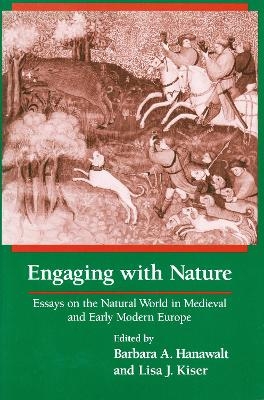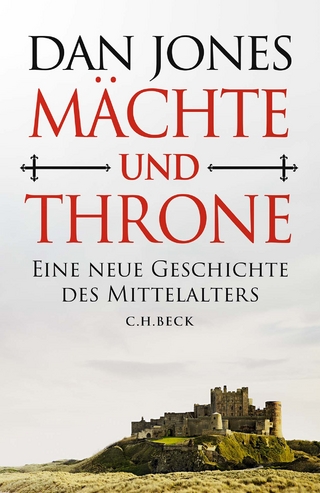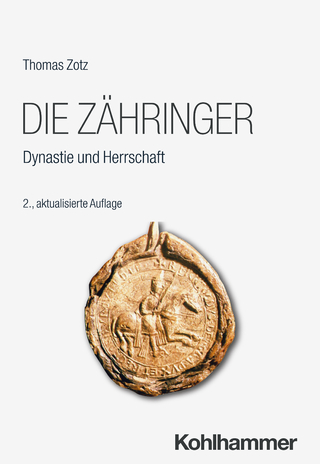
Engaging With Nature
Essays on the Natural World in Medieval and Early Modern Europe
Seiten
2022
University of Notre Dame Press (Verlag)
978-0-268-20608-6 (ISBN)
University of Notre Dame Press (Verlag)
978-0-268-20608-6 (ISBN)
This collection of essays makes a highly original contribution to the emergent field of medieval and pre-modern studies on the history of nature.
Historians and cultural critics face special challenges when treating the nonhuman natural world in the medieval and early modern periods. Their most daunting problem is that in both the visual and written records of the time, nature seems to be both everywhere and nowhere. In the broadest sense, nature was everywhere, for it was vital to human survival. Agriculture, animal husbandry, medicine, and the patterns of human settlement all have their basis in natural settings. Humans also marked personal, community, and seasonal events by natural occurrences and built their cultural explanations around the workings of nature, which formed the unspoken backdrop for every historical event and document of the time.
Yet in spite of the ubiquity of nature’s continual presence in the physical surroundings and the artistic and literary cultures of these periods, overt discussion of nature is often hard to find. Until the sixteenth century, responses to nature were quite often recorded only in the course of investigating other subjects. In a very real sense, nature went without saying.
As a result, modern scholars analyzing the concept of nature in the history of medieval and early modern Europe must often work in deeply interdisciplinary ways. This challenge is deftly handled by the contributors to Engaging with Nature, whose essays provide insights into such topics as concepts of animal/human relationships; environmental and ecological history; medieval hunting; early modern collections of natural objects; the relationship of religion and nature; the rise of science; and the artistic representations of exotic plants and animals produced by Europeans encountering the New World.
Historians and cultural critics face special challenges when treating the nonhuman natural world in the medieval and early modern periods. Their most daunting problem is that in both the visual and written records of the time, nature seems to be both everywhere and nowhere. In the broadest sense, nature was everywhere, for it was vital to human survival. Agriculture, animal husbandry, medicine, and the patterns of human settlement all have their basis in natural settings. Humans also marked personal, community, and seasonal events by natural occurrences and built their cultural explanations around the workings of nature, which formed the unspoken backdrop for every historical event and document of the time.
Yet in spite of the ubiquity of nature’s continual presence in the physical surroundings and the artistic and literary cultures of these periods, overt discussion of nature is often hard to find. Until the sixteenth century, responses to nature were quite often recorded only in the course of investigating other subjects. In a very real sense, nature went without saying.
As a result, modern scholars analyzing the concept of nature in the history of medieval and early modern Europe must often work in deeply interdisciplinary ways. This challenge is deftly handled by the contributors to Engaging with Nature, whose essays provide insights into such topics as concepts of animal/human relationships; environmental and ecological history; medieval hunting; early modern collections of natural objects; the relationship of religion and nature; the rise of science; and the artistic representations of exotic plants and animals produced by Europeans encountering the New World.
Barbara A. Hanawalt is King George III Professor of British History at Ohio State University.
| Erscheinungsdatum | 13.08.2022 |
|---|---|
| Zusatzinfo | 26 Halftones, unspecified |
| Verlagsort | Notre Dame IN |
| Sprache | englisch |
| Maße | 152 x 229 mm |
| Themenwelt | Sachbuch/Ratgeber ► Natur / Technik ► Natur / Ökologie |
| Geschichte ► Allgemeine Geschichte ► Mittelalter | |
| Geisteswissenschaften ► Geschichte ► Regional- / Ländergeschichte | |
| ISBN-10 | 0-268-20608-2 / 0268206082 |
| ISBN-13 | 978-0-268-20608-6 / 9780268206086 |
| Zustand | Neuware |
| Informationen gemäß Produktsicherheitsverordnung (GPSR) | |
| Haben Sie eine Frage zum Produkt? |
Mehr entdecken
aus dem Bereich
aus dem Bereich
eine neue Geschichte des Mittelalters
Buch | Hardcover (2023)
C.H.Beck (Verlag)
38,00 €


